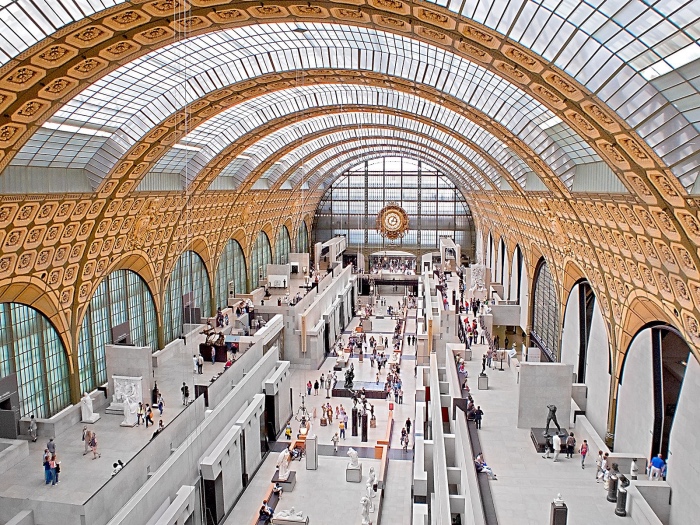
Image source: Art In High Heels – WordPress.com
MUSEE D’ORSAY WORKS: THE UNMISSABLE WORKS, HOW TO REACH IT AND WHERE YOU CAN FIND THE TICKETS
Musée d’Orsay works and artists of one of my favorite museums in Paris.
It’s the perfect continuation of the Louvre Museum with its art collections dating from the second half of the 19th century to the early 20th century.
The museum was originally a railway station, Gare d’Orsay, which in 1986 became the Musée d’Orsay.
In this post I explain which works you absolutely must not miss and at the end of the post you can also book a ticket to see the museum.
Musée d’Orsay works
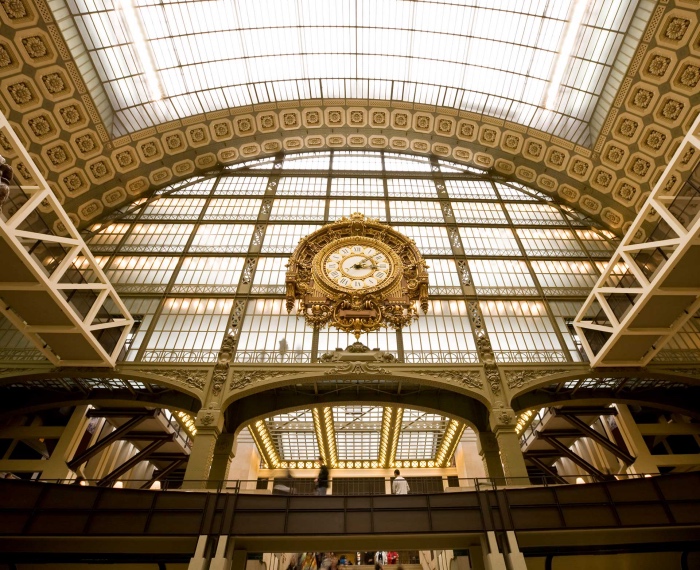
Image source: Dott.ssa Gabriela Stelian.it
MUSEe D’ORSAY WORKS
The Musée d’Orsay was born to hold French art dating from 1848 to 1914, coming mainly from the Louvre, the Galerie National du Jeu de Paume and the Musée National d’Art Moderne.
That’s why at the Musée d’Orsay you’ll find the largest collection of masterpieces of Impressionism, post-Impressionism and avant-gardes of the 20th century.
To visit the Musée d’Orsay without losing time, I suggest that you get the map of the museum (you can find it at the entrance), where you’ll find the locations of the artworks. The audio guides are very useful, as well and will allow you to visit the museum in about an hour and a half, discovering the 30 most important masterpieces on display.
But remember that you can’t exit the Musée d’Orsay without admiring these 5 paintings:
1 – “Bal au Moulin de la Galette” by Pierre-Auguste Renoir
This is one of Renoir’s most important paintings.
The technique used is that of the Impressionists because it was painted “en plein air”, that is directly on the site.
The artist manages to convey the happiness of an afternoon in a Paris venue, where people dance and chat in an interior garden. It is so beautiful that it seems to hear the voices and the background music!
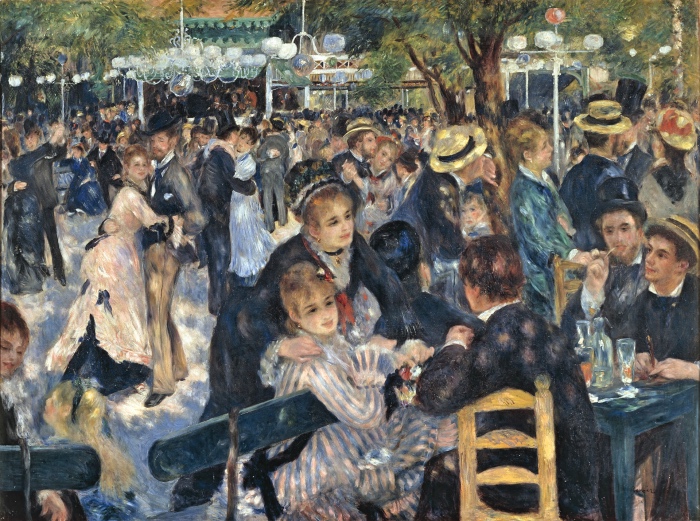
Image source: wikipedia.it
2 – “The Luncheon on the Grass” by Manet
This is the first work that stands out in terms of style and composition from academic painting, but it is also the painting that starts my career with Manet, considered one of the fathers of Impressionism.
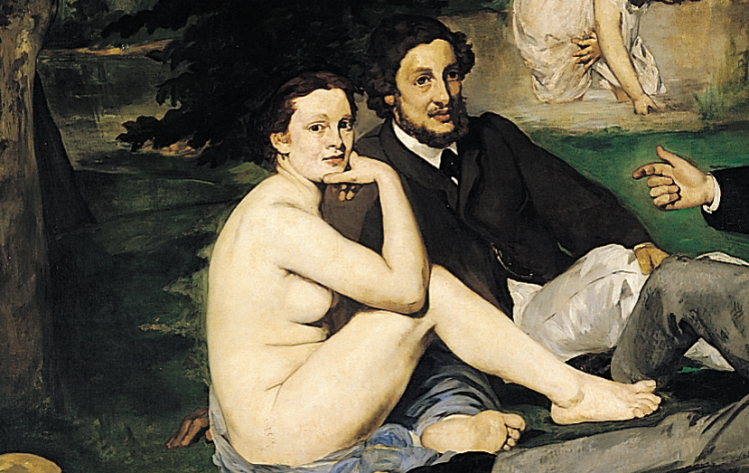
Image source: wikipedia.it
3 – “The Ballet Class” by Edgar Degas”
The dancers are the subject for which the arista Edgar Degas is famous and to whom he dedicates all his efforts from the seventies of the nineteenth century to the end of his career.
The dancers, especially cultured during their moments of pause, were an inexhaustible source of inspiration for Degas, who represented all the possible combinations of movements and expressions.
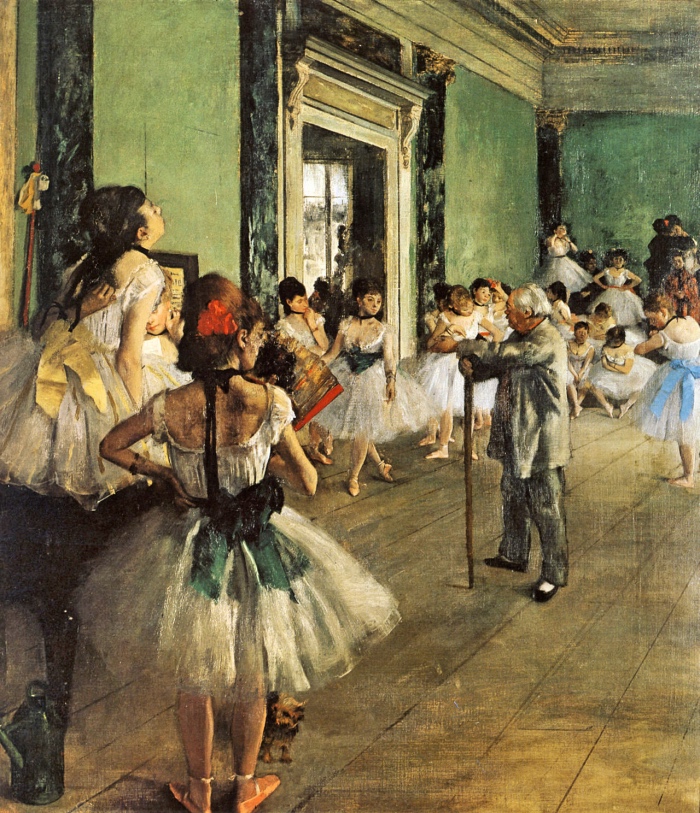
Image source: wikipedia.it
4 – “The Origin of the World” by Courbet
Gustave Courbet is known for being the most important artist of the realist movement.
His most famous work is “the origin of the world”, revolutionary and transgressive enough to be censored even today because it shows with unprecedented realism where we come from.
Courbet goes beyond the sense of sight and beyond the tactile experience and enters the sphere of sensations, becoming an inspiration for the Impressionists.
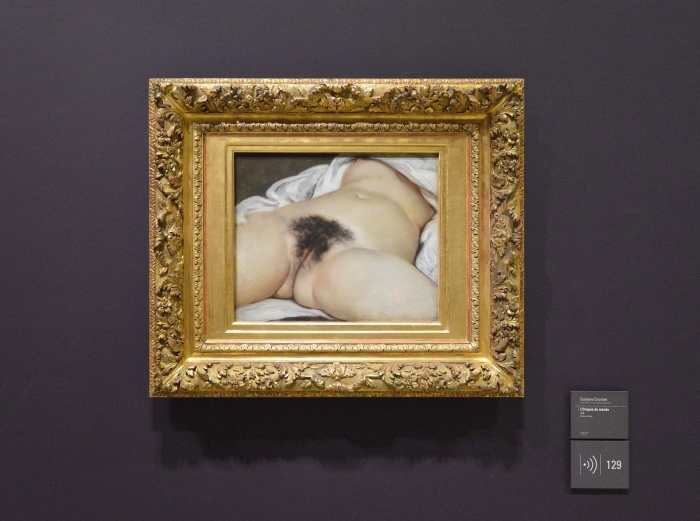
Image source: wikipedia.it
5 – “Self-Portrait” by Van Gogh
The artist painted many self-portraits and this is my favourite.
Van Gogh’s self-portrait was made in the Saint Remy asylum, while the artist was trying to recover from a two-month bout of madness, during which he attempted to commit suicide by ingesting his paints.
Of this work, Van Gogh wrote to his brother Theo: ‘You will notice how the expression on my face is calmer, although it seems to me that the gaze is more unsteady than before’.
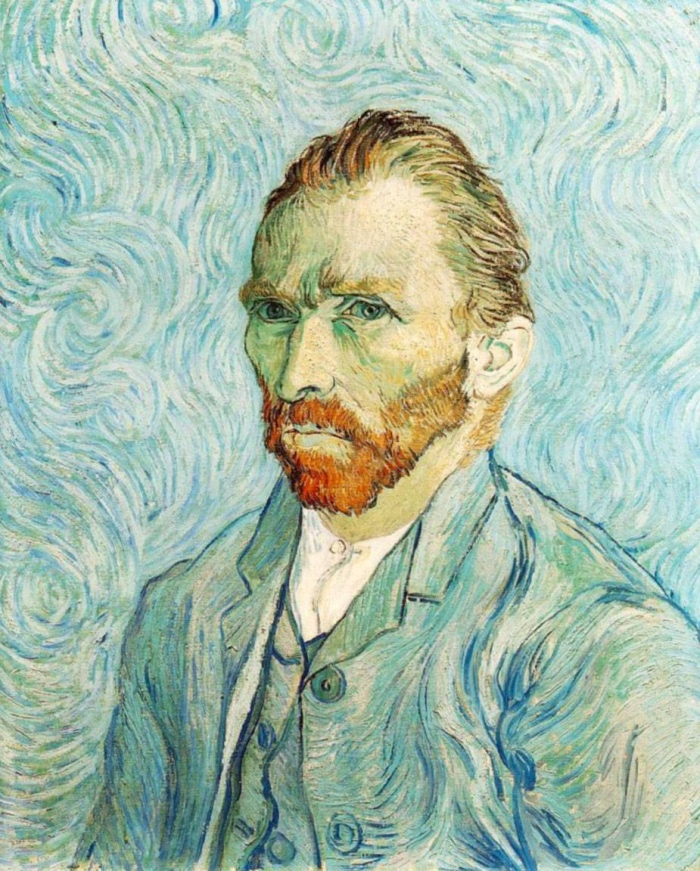
Image source: wikipedia.it
5 – “Women in the Garden” by Monet
A masterpiece! This is one of the earliest examples of en plein air painting, a new technique in the art scene of the second half of the 19th century, which was the basis of the Impressionist revolution.
The painting was rejected at the 1867 Salon because its painting was considered inaccurate, in fact this is one of the works that started the overwhelming revolution of Impressionism.
For a description of the work read the post on Monet’s Women in the Garden.
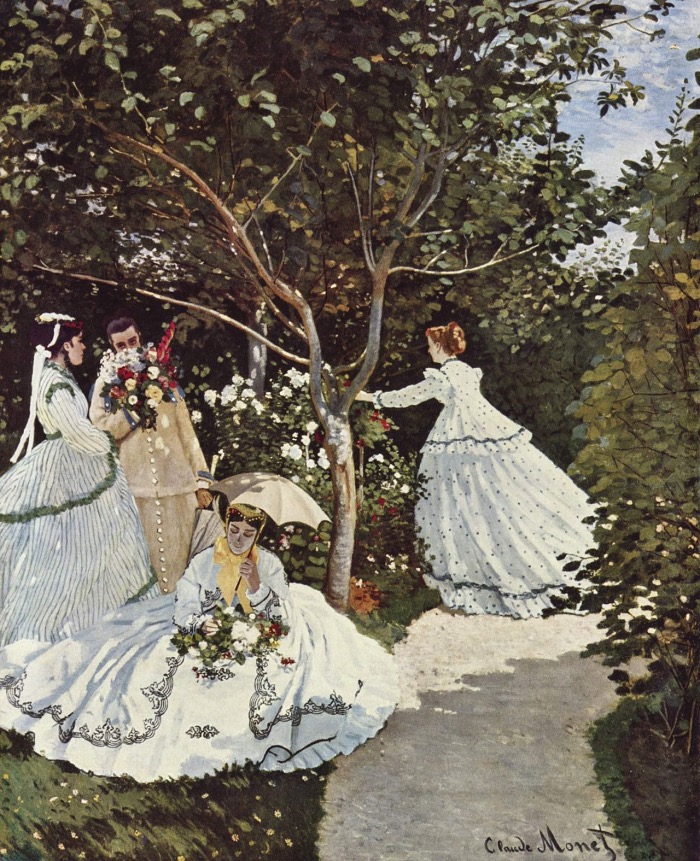
Donne in giardino di Monet
Get to the MuseE d’Orsay
It’s very easy to get to the Musée d’Orsay.
By subway: one of the easiest way to reach the museum is taking the Paris metro: line 12 dropping you off at the Solférino station or you can take the urban rail service of Paris (RER) line C, stopping at the Musée d’Orsay station.
By bus: many bus lines stop near the museum (lines 24, 63, 68, 69, 73, 83, 84, 94).
By car: you can park your car at the Carrousel du Louvre parking lot.
Tickets and open days
The Musée d’Orsay is open every day, but is closed on Mondays and January 1st, May 1st and December 25th.
I have written a post with all the information you need to book tickets for the Musée d’Orsay.
After your visit to the Musée d’Orsay don’t throw away your ticket: it’s valid for 8 days from date of purchase, and you can use it to get reduced rates at the: Gustave Moreau National Museum, the Palais Garnier (Paris National Opera) and at Musée National Jean-Jacques Henner.
Unlike the Louvre Museum, the Musée d’Orsay is more people-friendly and you can visit it calmly in half a day.
But if you make a list of artworks to see, a couple of hours will be enough.
READ ALSO: What to see at the British Museum.
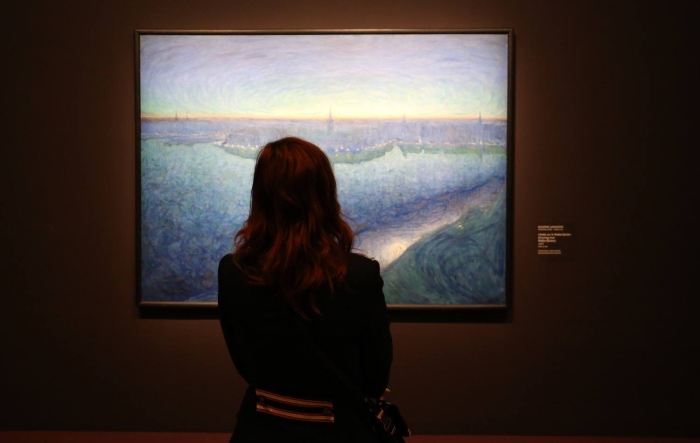
Image source: www.facebook.com/museedorsay
INFO
Musée d’Orsay
1 Rue de la Légion d’Honneur, 75007 Paris, France


Ciao prima di tutto complimenti per il lavoro e la passione che metti nel tuo blog.
Vorrei chiederti un consiglio, in quanto prima di Natale vorrei andare a Parigi per 3 giorni.
A parte il Museo D’Orsay cosa altro mi consigli di vedere?
Arte solo Arte, anche Musei aperti fino a tardi.
Grazie
Nico
Grazie per i complimenti.
Per Parigi hai solo l’imbarazzo della scelta.
Ti consiglio quelli meno noti al grande pubblico.
– Museo Rodin: Si trova in uno dei bellissimi palazzi del Fauborg St-Germain, l’Hotel Biron, dove Auguste Rondin è l’artista di punta del Museo.
– Museo Montmartre: Il Museo è ospitato nella casa di Claude de la Rose, dove abitarono anche Renoir e Suzanne Valadon, un luogo ricco di storia dell’arte fin quasi dalle sue origini.
– Musée Marmottan Monet: è un museo di impressionismo ed arte francese dell’Ottocento.
– museo Jacquemart-André : una residenza spettacolare, che ospita la collezione d’arte riunita, tra 1864 e 1912, dai coniugi Edouard André e Nélie Jacquemart.
Ho scritto anche una guida veloce alle cose da fare e vedere gratis a Parigi, dove forse trovi qualche idea originale —> https://www.theartpostblog.com/cosa-vedere-gratis-a-parigi/
Ho dedicato anche una settimana a Parigi su Facebook. Se vai al link trovi le immagini di luoghi da vedere con qualche dettaglio per saperne di più —> https://www.facebook.com/pg/artpostblog/photos/?tab=album&album_id=1376552765727441